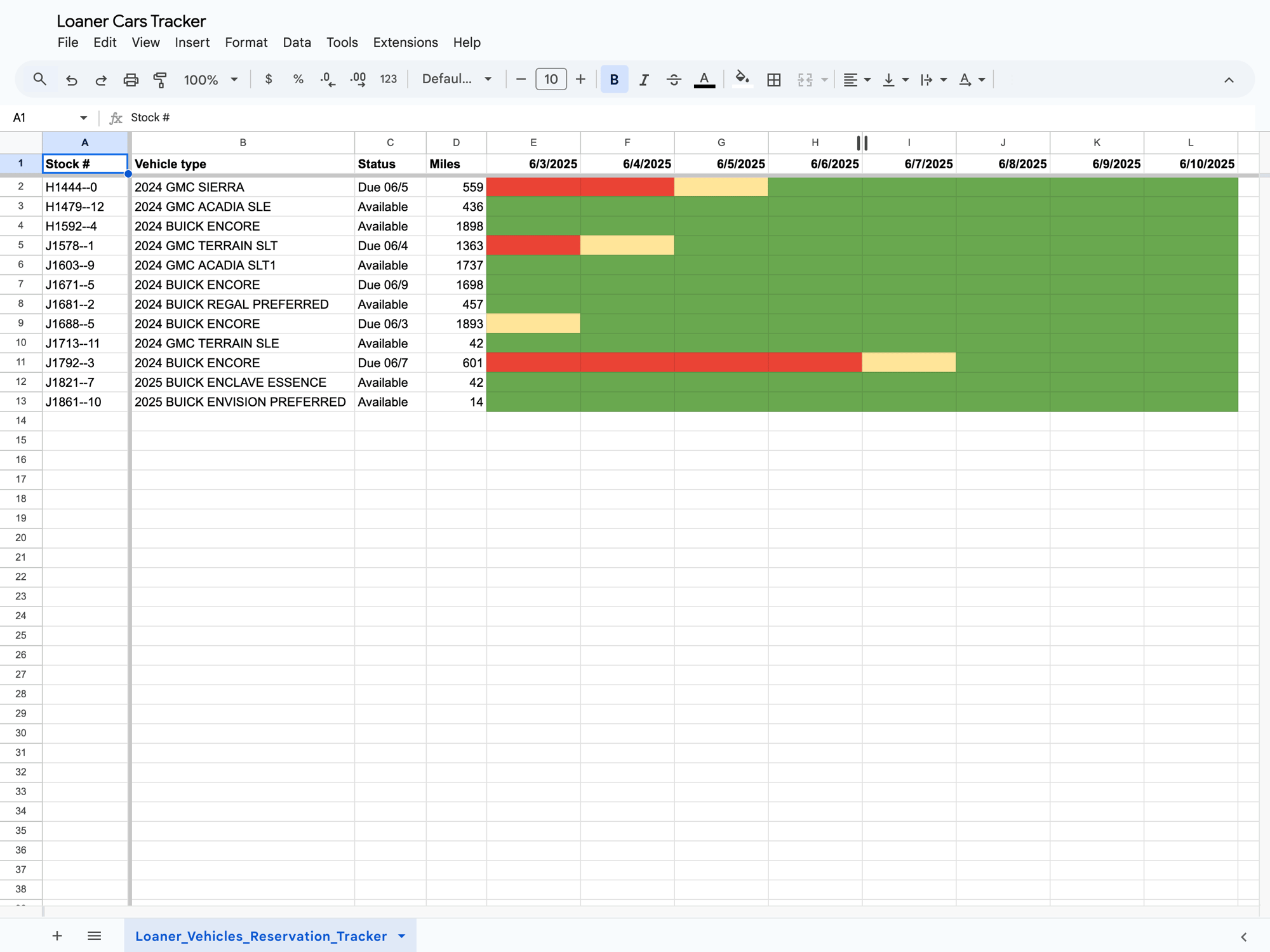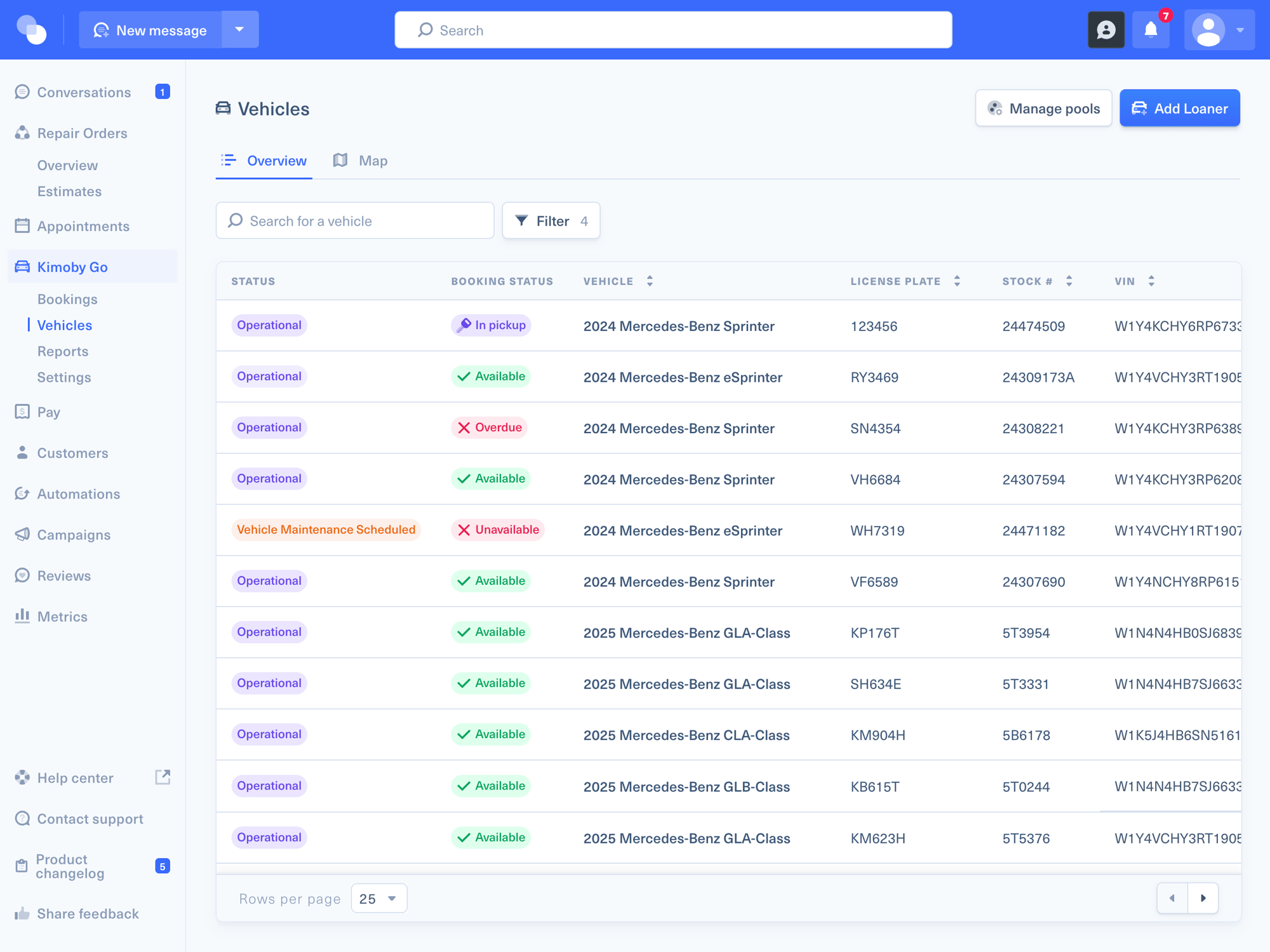How to Improve Your Dealership Fixed Ops Retention
Bringing customers into your dealership is only the first step. Your significant challenge is making sure they come back when servicing their car and buy their next vehicle at your dealer.
Many dealerships spend a lot on marketing to find new customers. Often, you miss the chance with customers they already have. This focus on finding new customers costs a lot and is hard to keep up.
In this article we’ll explain how focusing on customer retention can help your dealership make more money, be more stable, and grow. We will talk about the most effective strategies you can implement today to see the benefits.
Table of Contents
What is Customer Retention?
Customer retention measures how well your dealership builds lasting relationships that keep buyers returning for both service and future vehicle purchases. It's about cultivating loyalty beyond the initial sale.
Here's the thing: only 23% of customers in North America stick with your dealer for both buying cars and getting service. That's a huge missed opportunity for you!
When customers leave after buying a car, you lose all that service revenue. And when it's time for their next vehicle, they're shopping around instead of coming straight to you. By focusing on keeping customers happy and connected to your dealership, you turn one-time buyers into regulars who keep your service bays full and your sales floor busy for years to come.
Why is Customer Retention Important?
Key Benefits:
- Costs 5-25x less than acquiring new customers
- 5% retention increase can boost profits by 25-95%
- Service customers are 74% more likely to purchase their next vehicle from you
- Creates valuable word-of-mouth marketing and referrals
Good retention isn't just a nice-to-have, it directly impacts your bottom line. Finding new customers costs you 5-25 times more than keeping existing ones. That's advertising money that you don't have to spend when customers come back on their own.
The numbers tell the story: increasing retention by just 5% can increase your profits by 25-95%. Repeat customers naturally spend more (31% more on average) and are more willing to try additional services once they trust you.
Your service department is crucial for future sales. When customers regularly service with you, 74% will buy their next vehicle from you too. But here’s the thing, 70% of customers who bought a new car from a dealer didn’t return for service. Imagine the revenue potential if you improved that number.
It doesn’t stop there. Satisfied customers become your unpaid marketing team, bringing friends and family through word-of-mouth. Their lifetime value (LTV) multiplies through years of service visits, repeat purchases, and referrals.
And a good retention rate helps during market changes. A loyal customer base helps you keep the business steady when the economy is bad. Dealerships focused only on new customers don't have this safety.
How to Calculate Your Customer Retention Rate?
Measuring your retention rate gives important information for your dealership's plan. You can measure retention in two main ways:
- Repeat Sales Rate
This measures the share of sales from old customers.
Calculation:(Number of repeat customers buying in a period / Total number of customers buying in that period) x 100. - Service Retention Rate
This tracks the share of service customers who come back for more service.
Calculation:(Number of repeat service customers in a period / Total number of service customers from an earlier similar period) x 100.
Numbers from the industry show how things are for dealerships like yours:
- The average North American customer retention rate is 34%.
- In 2023, only 19.3% of monthly sales were to old customers.
- In 2024, only 23% of customers bought and serviced their cars at the same dealership.
NADA research shows how important the service department is:
Only 14% of customers buy their next car from the same dealer. But this goes up to 76% for customers who got regular service there. This connection shows again why your service department matters.
Why Does Your Service Department Play a Central Role in Your Retention Rate?
Think about how vital your service department is for keeping customers loyal.
While you might only sell a customer a car every few years, they'll likely visit your service department multiple times a year. Each oil change, tire rotation, or repair is a crucial touchpoint, an opportunity for you to either strengthen their connection to your dealership or weaken it.
This is where lasting loyalty is truly built. In fact, studies show (and nearly all dealers agree) that how your customers feel about their service visit often matters more than the actual repair itself (93.1%!).
A perfectly fixed car delivered with poor communication can still lose you a customer, while handling even a small issue with care and honesty can build significant trust. Every time a customer interacts with your service team, they're deciding:
Are you just a place that fixes cars, or are you a trusted partner they want to stick with for the long haul, including their next vehicle purchase?
8 Strategies to Improve Dealership Retention
If you want to make sure your customers will be returning to your service department and showroom, you will need a dedicated focus across your entire operation. True retention comes from consistently applying several key approaches. Here are eight essential strategies on how to improve your customer retention rate.
1. Make Your Customer's Visit Outstanding
Your customer experience is often the single biggest factor determining if they return. You need to offer a seamless, positive journey every time they interact with your dealership.
For your fixed operations, focus on more than just the repair itself. You should provide a welcoming environment with staff who are attentive and make customers feel comfortable. For longer services or recalls, you need to minimize their inconvenience by offering loaner vehicles or other transportation options.
Your staff should interact professionally and pleasantly, avoid making people wait unnecessarily, and keep them informed. You should use tools like thorough vehicle walk-arounds, listen carefully to your customer's concerns, and consider video inspections so they can see the condition of their vehicle themselves. Be transparent and educate your customers. This helps them make informed decisions without feeling pressured.
Personalize the experience by using your data to understand their preferences and service history. When you educate customers about maintenance and provide personalized advice, you become their trusted partner. Remember that the handoff from your sales team to service is critical.
2. Talk Clearly, Proactively, and Honestly
You need clear, honest, and frequent communication to build trust. Make sure your customers always understand what's happening with their vehicle, why service is needed, and what it will cost.
Send accurate estimates that provide the final "out-the-door" total to avoid confusion. Reaching out proactively before the customer has to call asking for an update shows you're caring and reduces their frustration. Nowadays, customers nowadays expect to be updated during the whole process.
Crucially, ask your customers how they prefer you contact them:
- Text
- Phone
And make sure you actually use that method!

We recently talked to an industry expert who told us about his latest dealership experience. He dropped off his new car for a warranty repair and some maintenance and specifically asked his advisor to text him with updates. But guess what? The advisor called him at the end of the day to tell him he could pick it up.
Think about that, he specifically asked for a text, but got a call instead. And don't think this is just a 'Gen Z thing'. This customer was in his mid-40s!
When you ignore a customer's direct request about how they want to be contacted, even for something simple, it tells them you weren't really listening and can damage the trust you're trying to build.
Another important consideration when communicating with clients is properly explaining the purpose and benefit of recommended services, not just selling them. You should also educate customers on upcoming service needs to set realistic expectations.
3. Make Service Simple and Convenient
Your customers value their time, so you must make getting service at your dealership as easy and hassle-free as possible. Offer easy ways to book appointments, especially a user-friendly online scheduling system that people can access anytime, and make sure you promote this option. Minimize how long customers have to wait as it’s often one of the major complaints. You should look into setting up express lanes or dedicated teams for routine jobs like oil changes to speed things up.
Offer convenient options like courtesy loaner vehicles, vehicle pick-up and drop-off services, or even mobile mechanics for certain repairs at your customers’ home or office.
The end of the visit is also important. Offer transparent, easy-to-understand invoices and simple digital payment options. Solution like Kimoby Pay can be really useful as clients can pay directly from their phones and have easy financing options. Your goal should be to make the entire process, from scheduling to payment, require minimal effort from your customer.
4. Fix Cars Right the First Time
Fixing vehicles correctly on the first visit is not only essential for your OEM score but it’s also essential if you want to keep customers. Nobody wants the hassle of coming back for the same problem. It destroys the trust you're trying to build.
Your fixed right first time rate is crucial, meaning that you have to implement thorough diagnostic procedures, invest in continuous training for your technicians so their skills stay sharp, make sure you have the necessary parts on hand, and establish quality checks within your service process.
Make sure you assign work appropriately based on technician skill level for efficiency and accuracy. Your service team has to be well-trained for the jobs they do. You should also communicate this expertise to your customers. Clients come to you expecting OEM-certified service, trained technicians, and genuine parts, making sure it’s reflected in the service you offer.
Fixing it right satisfies your customer, saves you money on rework, and builds your reputation for reliability.
5. Build Real Customer Relationships
To earn real loyalty, you need to turn basic transactions into lasting relationships. This means getting personal and showing genuine care. Use a tool like Kimoby, centered around customers, to keep track of service history, customer preferences, and past communications.
With it you can personalize interactions, make relevant recommendations, and offer promotions that matter to them.
Remember that the relationship often starts during the sale. So you need to make sure there’s a smooth, warm handoff from your sales team to the service department, personally introducing the customer to their service contact.
Follow up with customers after service visits, not to sell, but simply to check that everything is okay and that they're satisfied. Bonus, those messages can help you improve your CSI score. When your customers feel known and valued, they'll keep coming back.
6. Use Technology Effectively to Enhance the Experience
You should use technology strategically to make your processes smoother and the customer experience better and more transparent.
Using digital vehicle inspection tools that create reports with photos or videos and sharing these with customers is a fantastic way to transparently show them what needs to be done and builds incredible trust.

Offer a convenient online scheduling platform that's easy to find and use. Think about using text messaging for appointment confirmation, quick updates and communication, estimates with video and payment. Make sure your dealership website is user-friendly and packed with helpful information. Using technology smartly helps you deliver on almost all your other retention strategies more effectively.
7. Be Clear and Honest About Pricing
You have to tackle pricing head-on and be completely transparent, because the fear of being overcharged is a major reason customers avoid dealership service departments. Provide clear, upfront cost estimates whenever possible, ideally when the appointment is booked or right at the start of the visit.
Consider listing your prices for common maintenance jobs (like oil changes or tire rotations) right on your website so there are no surprises. Ensure all your invoices are detailed and clearly itemize parts, labor, and fees.

Your service advisors should be able to talk about costs openly and confidently explain the value that comes with your price.
The expertise of your certified technicians, the quality and warranty that come with OEM parts, and your specialized equipment.
This justification helps build trust. You might also consider offering price matching guarantees on certain services or tires to show you're competitive. Being upfront and honest about costs shows respect for your customer and is essential for building long-term trust.
8. Offer Courtesy Vehicles When Possible
Providing transportation options, especially courtesy loaner vehicles, is a powerful tool for convenience that your customers will appreciate. When service requires keeping a customer's car for a while, offering a loaner removes a major headache for them. Our data show that this convenience directly translates to the number of approved repairs your customers might otherwise put off.
Besides making your customers happy, offering loaners can also indirectly help your service quality, as technicians may feel less rushed when the customer isn't waiting at the dealer, allowing more time for careful work and checks.
And with a solution like Kimoby Go, loaners don’t have to be the headache and bunch of fees they once were.


Conclusion
You need your customers to keep coming back if you want your dealership to succeed and stay strong, now and in the future. Your current customers are your best bet for steady income and growth, don't overlook them!
Every employee, from sales to service to the front desk, helps create the experiences that make customers want to return. You need to treat customer retention as fundamental to your business, not just some side project or program. Track how well you're doing at keeping customers, and always be looking for ways to make those relationships even stronger.
Customers have tons of choices today. Getting them to choose your dealership again and again, for service and their next vehicle, gives you a massive advantage. So, put your focus on taking great care of the customers you already have.
Ask yourself: What step will you and your team take today to get better at keeping your valuable customers?
You May Also Like
These Related Stories
/photo_service_advisor_customer.png)
How To Turn Declined Service to Revenue Opportunities for Your Dealership

Kimoby and Volkswagen USA Partner to Modernize the Service Lane Experience
/blog/thumbnails/blog_keep-your-dealership-customers-loyal.png)


